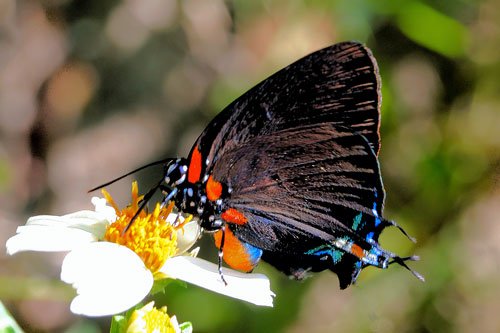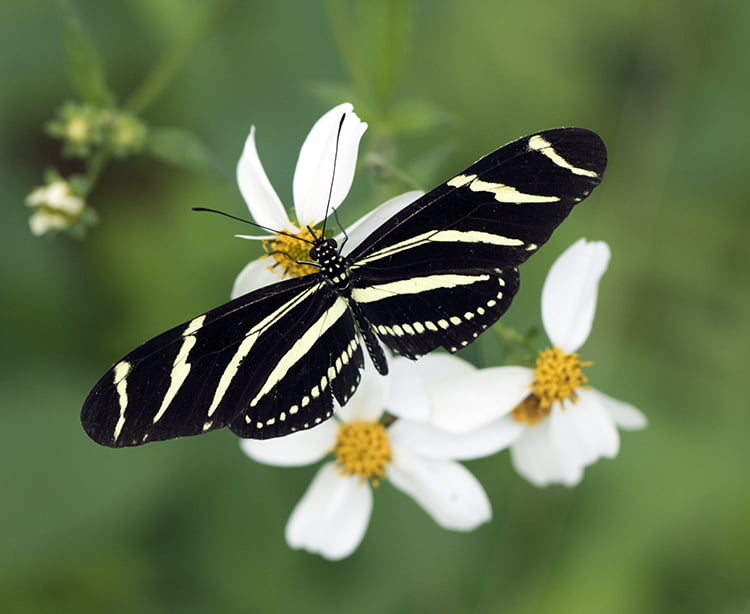Bidens Alba, commonly known by several names including Beggarticks, Romerillo, Spanish Needle, and endearingly referred to as “Butterfly Needle,” is a fascinating and widely recognized plant within Florida’s diverse flora. This hardy and prolific species, part of the Asteraceae family, plays a significant role in the local ecosystem, particularly for pollinators such as butterflies, hence the nickname.
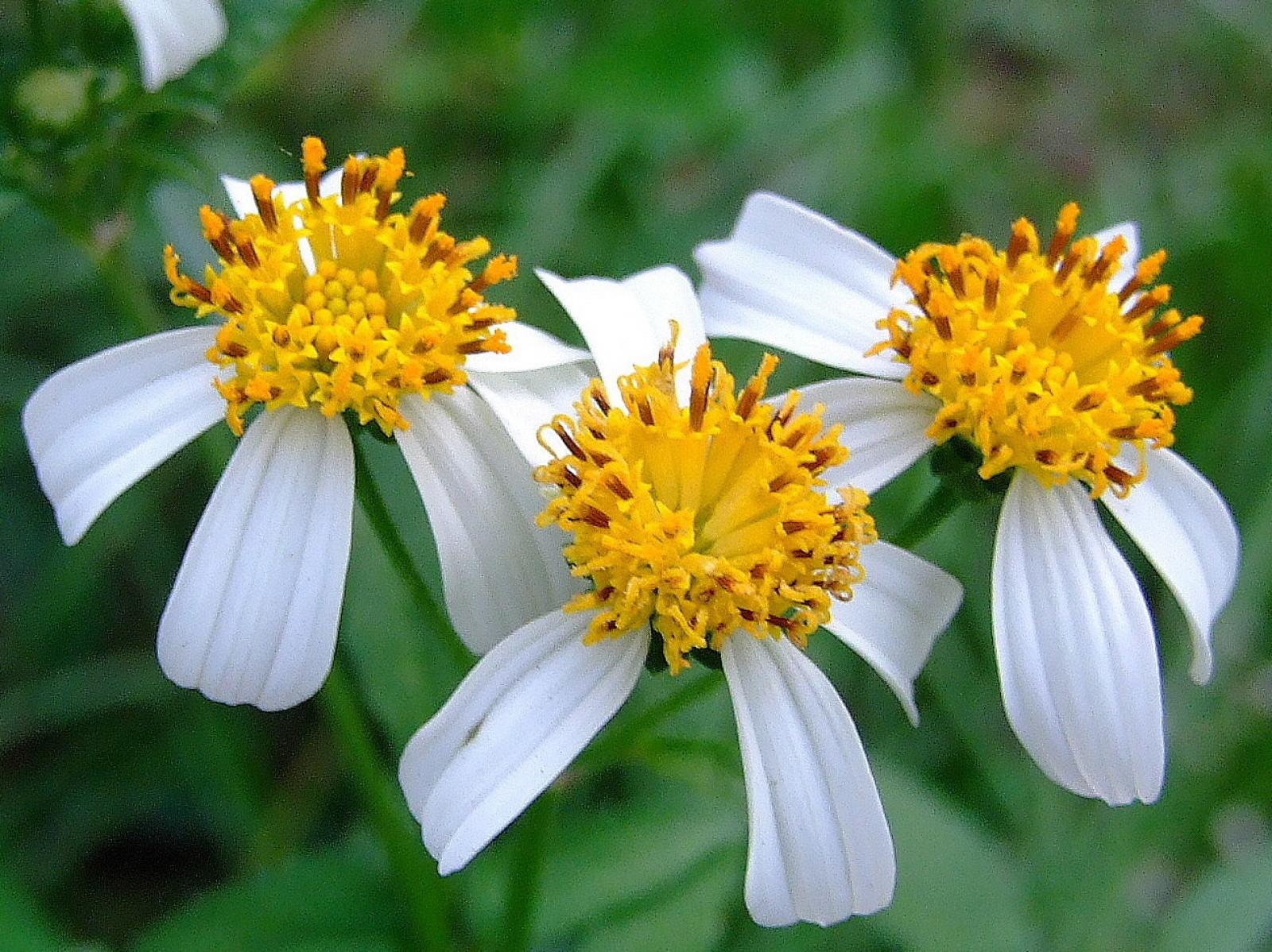
Nativity and Distribution
The nativity of Bidens alba has been a topic of discussion among botanists, with some evidence suggesting that it may be native to Florida, though primarily to the southern part of the state within USDA Hardiness Zone 10. This region is part of the Neotropic Realm, where many tropical and subtropical species thrive. The earliest known records of Bidens alba in Florida date back to the 1830s, with specimens collected around Tampa Bay and Key West, identified as B. leucantha by Torrey & Gray in 1842. Subsequent documentation of the species in the state includes its presence around Indian River in 1874, Cedar Keys in 1876, Miami in 1877, Manatee in 1889, and even as far west as Mobile, Alabama, in 1891.
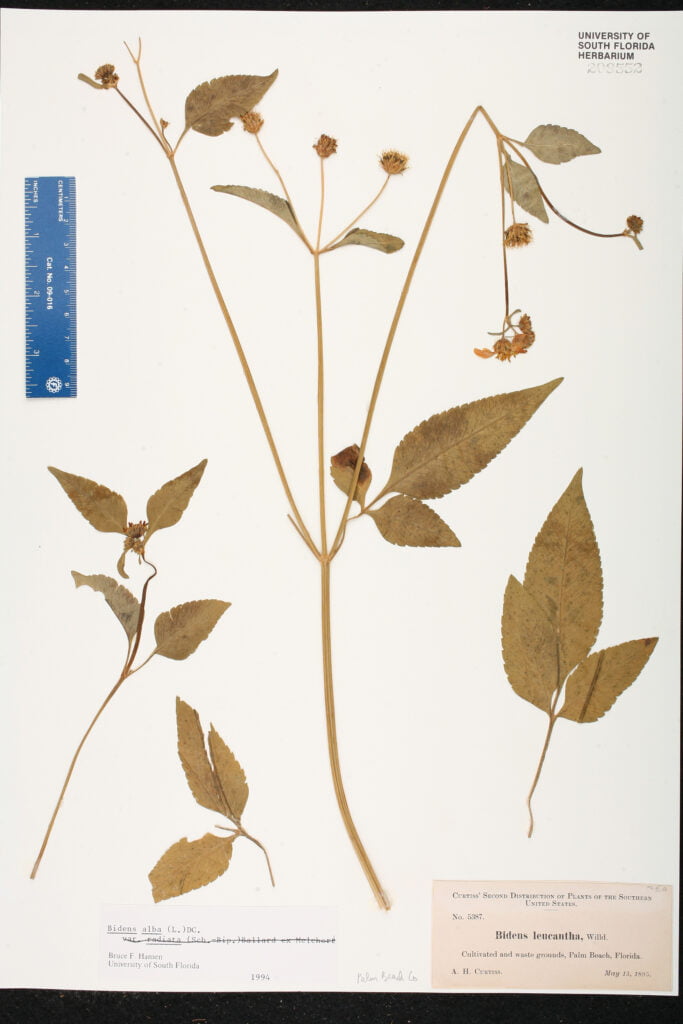
Taxonomic Debate
Bidens alba has been the subject of considerable taxonomic debate. Some botanists have opted to recognize only B. pilosa s.lat., a broad sense species that encompasses various forms, including what some would identify as B. alba. This perspective is supported by sources such as the Flora of North America (FNA, vol. 21), Melechert (2010), and León de la Luz & Medel Narváez (2013). However, other treatments have continued to distinguish B. alba from its relatives, particularly B. odorata and B. pilosa s.s. This approach is backed by earlier work from Ganders & Nagata (1983) and Ballard (1986), who maintained these as separate species based on morphological differences and other factors.
Interestingly, it has been reported that B. alba and B. pilosa s.s. are interfertile, which complicates the taxonomic delineation between these species. Interfertility suggests a close genetic relationship, possibly indicating that these taxa represent a continuum rather than distinct species.
Epitypification and Provenance
The taxonomic stability of Bidens alba was further clarified when it was epitypified by a specimen from Veracruz, Mexico, which is believed to be the source of the original material described under this name. The epitype, annotated by Ballard as B. alba, provides a reference point that helps standardize the application of the name and ensures consistency in its identification. This move by Ferrer-Gallego in 2016 has been important in resolving some of the confusion surrounding the species’ identity and classification.
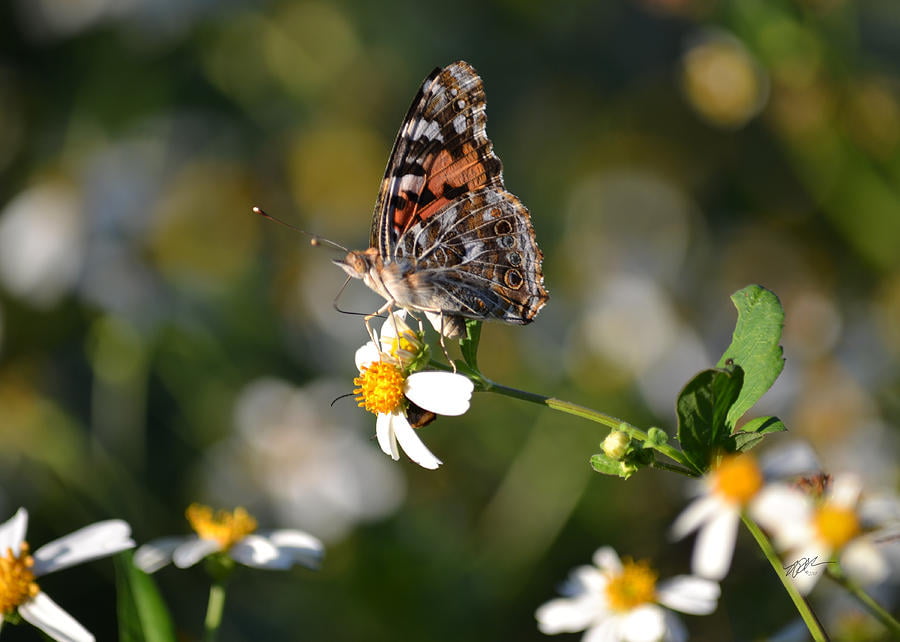
Ecological Importance
Regardless of its taxonomic intricacies, Bidens alba is an ecologically significant plant in Florida and the surrounding regions. It is a prolific bloomer, producing a multitude of white flowers with yellow centers that attract a wide variety of pollinators, particularly butterflies. This has earned it the affectionate nickname “Butterfly Needle,” as it serves as a vital food source for these insects, especially in urban and disturbed environments where natural habitats may be limited.
Bidens alba is also known for its resilience, thriving in a range of conditions from sandy soils to moist, disturbed areas. Its ability to grow in such diverse environments makes it both a valuable plant for supporting biodiversity and, at times, a tenacious “weed” in agricultural settings.
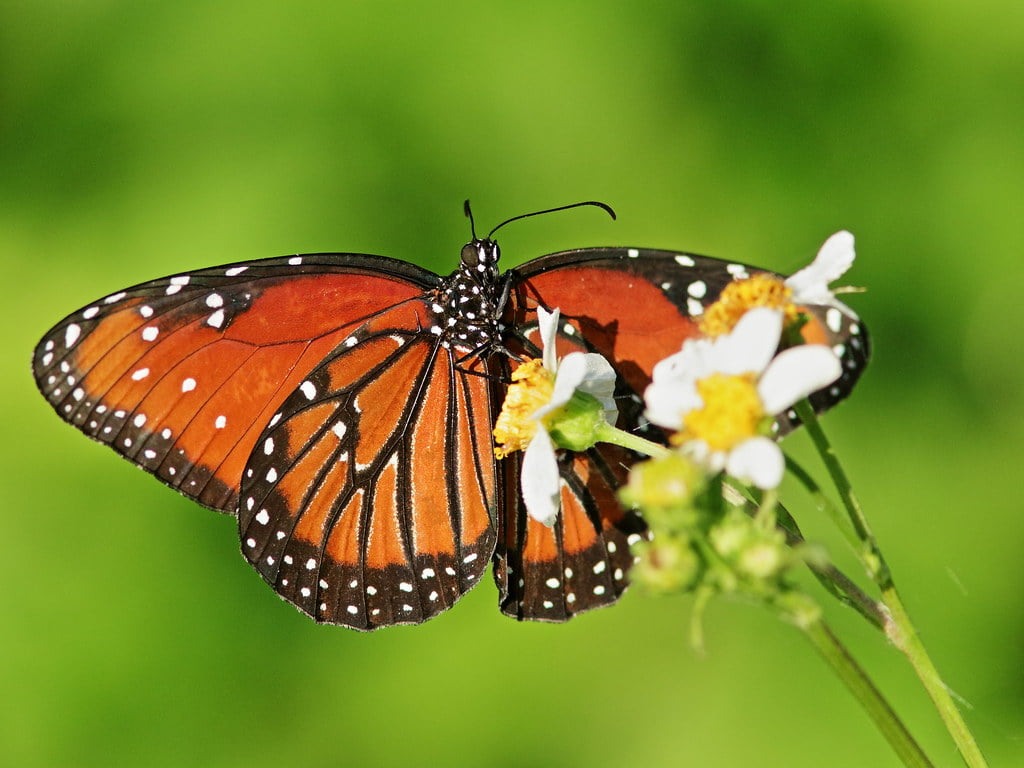
Conclusion
Bidens alba, or the “Butterfly Needle,” is a plant of both ecological and botanical interest. Its debated nativity in Florida, complex taxonomic history, and role in supporting pollinators make it a subject worthy of attention. Whether seen as a native species of South Florida or a widespread naturalized plant, its presence in the landscape is undeniable and contributes significantly to the region’s ecological tapestry. As we continue to study and understand this species, it remains a testament to the intricate relationships between plants, their environments, and the organisms that depend on them.
